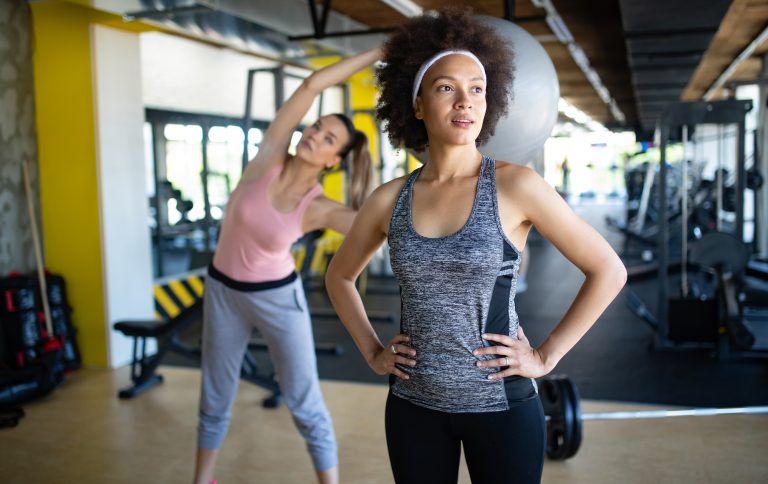 The deadlift is an awesome exercise. It strengthens the legs and back and more specifically targets the hamstrings, glutes, and erector spinae (muscles that run from the top of your spine down to your tailbone). Power lifters use this exercise for explosive power. Golfers use it to strengthen their lower backs and prevent injury. Women use it to lengthen muscles and tone their core. For all the benefits of the deadlift, it’s imperative to focus on form and keep the weight within your strength range based on your goals. Too many injuries have resulted from improper form and a misunderstanding of the muscles and motion used during a deadlift.
The deadlift is an awesome exercise. It strengthens the legs and back and more specifically targets the hamstrings, glutes, and erector spinae (muscles that run from the top of your spine down to your tailbone). Power lifters use this exercise for explosive power. Golfers use it to strengthen their lower backs and prevent injury. Women use it to lengthen muscles and tone their core. For all the benefits of the deadlift, it’s imperative to focus on form and keep the weight within your strength range based on your goals. Too many injuries have resulted from improper form and a misunderstanding of the muscles and motion used during a deadlift.
To really understand how to perform proper deadlifts, there are a few key ideas to keep in mind to remain safe and get the most of out of this killer exercise:
Keep Your Hips Dominant
The deadlift is a hip dominant move performed with a flat back (not rounded). Simply stated, your hips move forward and back, not up and down. When your hips move up and down, your quads become engaged and you are doing more of a squat than a deadlift. If you were to stand up straight with no weights in hand and bend at the waist to touch your toes, your hips would move back as you bend forward and keep your legs straight. As you raise back up, your hips move forward. This is essentially the movement during the deadlift.
Form Form Form
 Form is so important for every exercise, but it is doubly important for a deadlift. For this reason always start with light weight and gradually work your way up as you grow stronger and more comfortable with the exercise.
Form is so important for every exercise, but it is doubly important for a deadlift. For this reason always start with light weight and gradually work your way up as you grow stronger and more comfortable with the exercise.
For barbell deadlifts, begin by adding your desired weight (keep it light at first) and stand with your feet shoulder-width apart looking down at the bar on the ground. Keeping your legs and back straight, bend at the waist and grasp the bar with your dominant hand with an overhand grip. Now grasp the bar with the other hand using an underhand grip. You are ready to lift.
Keep the bar close to your shins as you begin to raise the bar off the ground. It helps to begin standing close enough to the bar. This initial phase should be slow and controlled. Don’t lift the weight too quickly. This is not a clean and jerk movement. Your hips should be pushed back as you lift the weight off the ground. Maintain straight legs with very minimal knee bend. This will ensure that the bar can pass your knees without rubbing them. Don’t round your back at any point during the lifting phase.
Balance
As you lift keep your weight back on your heels, so that you will be balanced throughout the movement. Your glutes and hamstrings will get the most benefit out of this focus.
Squeeze The Glutes
In the final stage of the lifting process, as you begin to stand up straight, squeeze your butt muscles and try to engage them as much as possible as your hips shift forward. This keeps the majority off the pressure off your lower back, while still allowing it to strengthen, and it also keeps your back from doing any kind of hyperextension (too much arch). You want to maintain as neutral a spine position as you can.
Dumbbell Bonus
An extra tip for using dumbbells: The form is the same for the movement of the exercise. However, you will start from the standing position and perform a stiff-legged deadlift. Bend at the hips with dumbbells in each hand and stop when the weight passes the knees or you feel a good, deep stretch in your hamstrings. Maintain a flat back and don’t round it. Return to the start by pushing the hips forward slowly and contracting your hamstrings and glutes.
That’s it. Follows these form rules and you’ll be on your way to performing perfect deadlifts.


